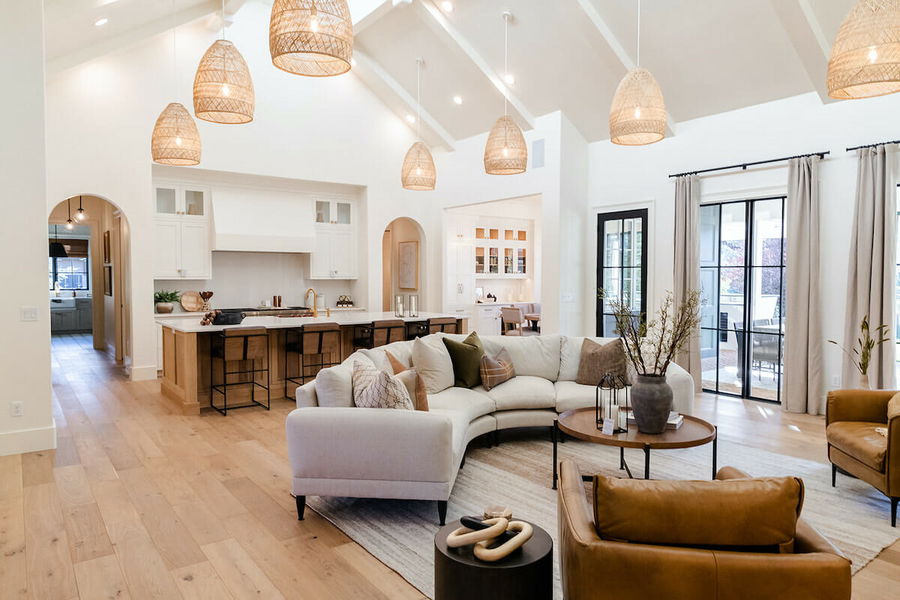Sandwich Leasing Creates Income – Options Create Wealth
Those of you who are unhappy landlords probably can’t imagine having tenants who average over ten years of residency. I’ve had two tenants who have lived with me over 20 years. I’ve had a tenant pay for their house twice over. I don’t work very hard. I usually see the outside of my houses once a year when I make a cursory check to be certain that the exteriors are being maintained. Good tenants get only token rent raises. On the other hand, poor maintenance is rewarded with high rent raises accompanied by a note explaining why residents are going to pay extra for repairs and landscaping if they don’t do it. If they stay, my rent raise is a form of “paper training” to improve performance. If they leave, they will have done me a favor. Reflecting good and bad tenant performance in rents works wonders. Even with $1000 annual rent raises, I didn’t lose any tenants because of the quality of the neighborhood where my rental was located and the freedom from interference I gave them. Unlike many landlords, my houses are well maintained and even after increases, my rents are competitive. Moreover, unlike many landlords, I treat my residents with respect as I would any employee.
Being able to attract long term residents opens up two fundamental ways to use “Sandwich Leases” to make two different kinds of profit. The person who is just starting out without much cash or credit can negotiate to lease a higher priced property in a better area that wouldn’t make any sense at all as a rental if its purchase had to be highly leveraged with a conventional loan. A “sandwich lease” is nothing more than a basic lease which contains a provision for the tenant to sub-lease the property. When approaching owners to obtain a sandwich lease, it’s important to make a good impression. Be neat, groomed, and convey a sense of reliability. Even though, by leasing their property you will be solving a financial or management problem, you’re still asking them to trust you with their house. One lady, who was nervous about leasing her pristine house, agreed to do so only if she could approve the tenant I selected. That worked out well for me. No money was due until her approved tenant had paid me his. When you can sub-lease it to a long-term tenant, you’re virtually guaranteed trouble-free income for years.
Another use of the Sandwich Lease is for the investor, who doesn’t like management, to fob off these chores to another in return for some of the gross rents. One eager young man formed a management corporation that managed houses for owners using a “performance sandwich lease”. He only pays 90% of the rent he collects from his sub-tenant, less out of pocket operating costs. He passes extra costs on to his sub-tenant. He makes several thousand dollars each year doing this. Sandwich leases can be magical when combined with a credit toward purchase Options.
When it comes to optioning property, there are all sorts of variations that can be used to solve specific needs of the parties. For instance, well-heeled sandwich lessees can pay owners more than is collected in sub-rents in return for a credit against the purchase of a home. For instance, a person might get a credit of 150% against an Option price for each payment to the owner in excess of market rents. Or, one might Option a house in need of a lot of repair in return for a percentage of the profit when the house is fixed up and sold. Rather than buying a pre-foreclosure and leasing the property back with a purchase Option to the former owner (which is a real no-no); have the owner convey the property into a Trust that you control. Let the owner occupy the house. Let the Trustee use Option payments to cure any loan default and keep payments current until you exercise your Option.
You can Option high-equity pre-foreclosures by offering to pay the distressed occupants monthly rental payments in return for part of the equity. For instance, suppose a $300,000 house had a $200,000 mortgage; but, because of being laid off, owners could only make $1500 of the $2500 payment. You could agree to supply the missing percentage of the payment (40%)for a corresponding percentage of ownership (40%) of the house. Where else could you buy what amounts to a $120,000 house already occupied by a happy resident with nothing down and $1000 per month?





